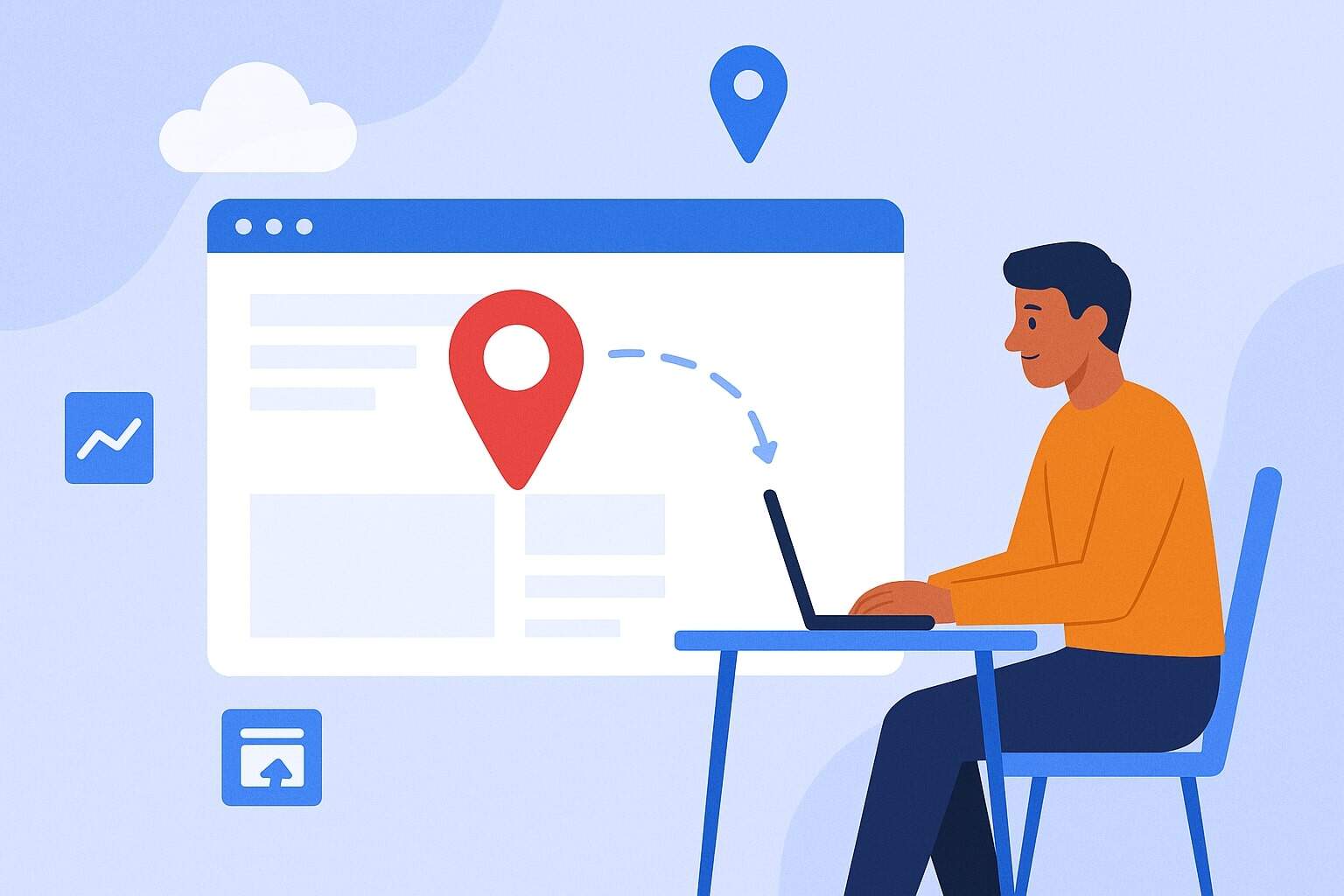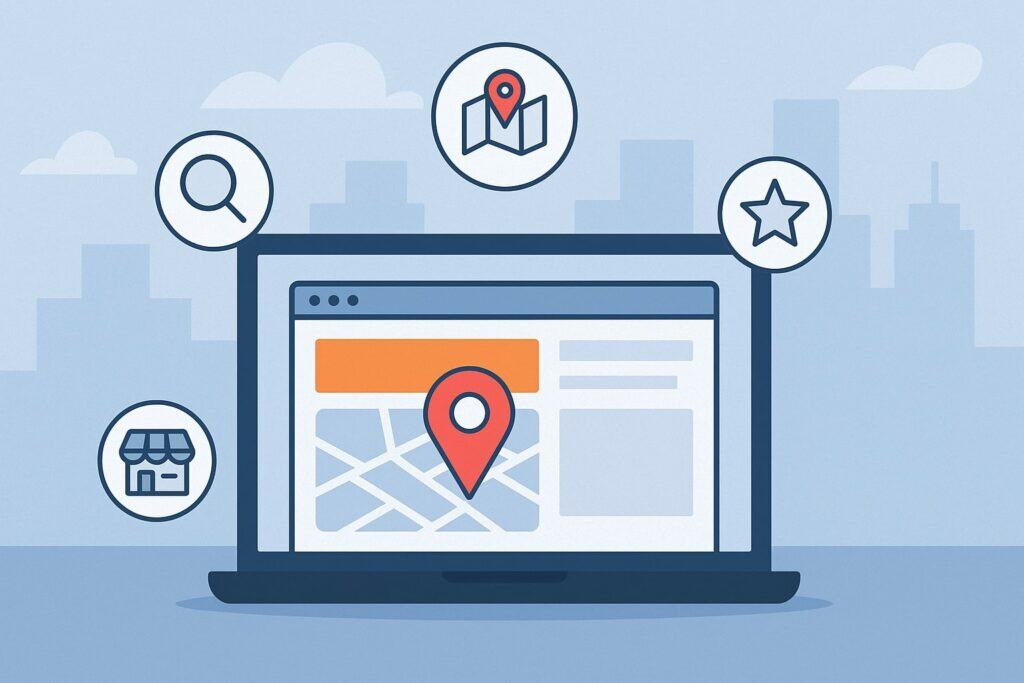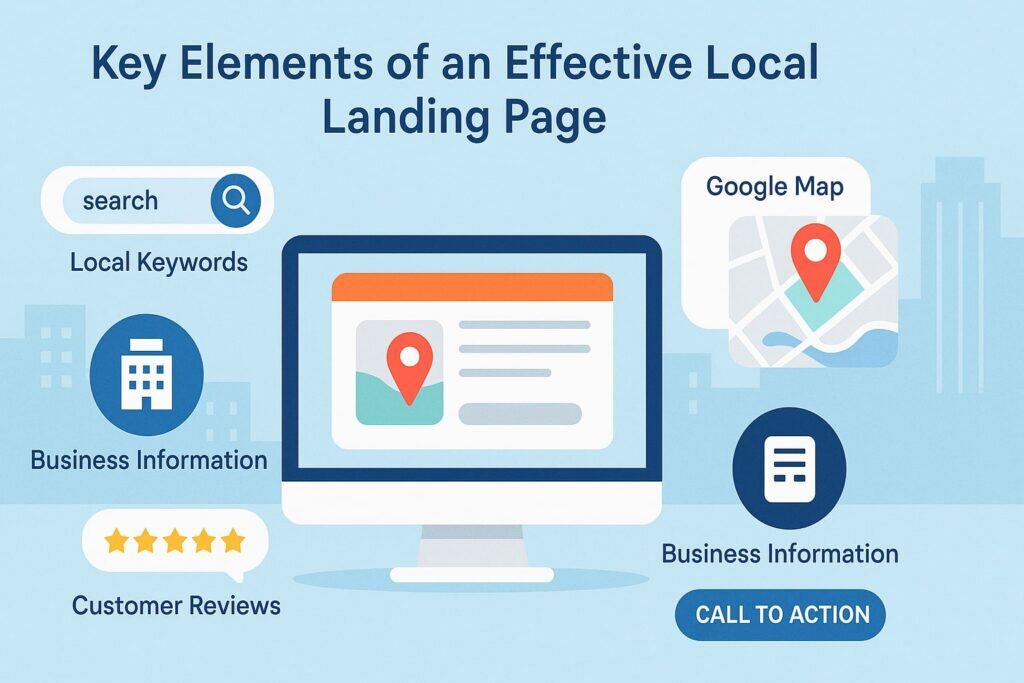
How to Use Local Landing Pages to Drive Traffic
Local landing pages have become one of the most powerful digital marketing tools for businesses that want to increase visibility in specific geographic areas. Whether you are a service provider, a retailer, or a local franchise, creating location-based pages allows you to attract targeted visitors who are actively searching for your products or services near them.
In today’s competitive online environment, simply having a website isn’t enough—search engines prioritize businesses that are relevant to a user’s location. That’s where local landing pages come in.
This article provides a step-by-step guide to building, optimizing, and leveraging local landing pages. We will cover how they work, why they’re effective, and the strategies you can use to maximize results.
By the end, you’ll understand not only how to create a local landing page but also how to turn it into a steady traffic and lead-generation machine.
What Are Local Landing Pages and Why Do They Matter?

Local landing pages are web pages created to target a specific geographic location, such as a city, town, neighborhood, or even a service area. Unlike generic landing pages that focus broadly on a product or service, local landing pages are hyper-focused on location-specific intent.
For example, instead of having a page for “plumbing services,” a business might have one titled “Plumbing Services in Dallas, TX.”
The Importance of Local Intent
Search engines, especially Google, want to deliver the most relevant results possible. When someone searches “dentist near me” or “best coffee shop in Seattle,” Google uses location signals to determine what results to show.
If your website doesn’t have pages optimized for those local queries, you miss out on valuable traffic. Local landing pages help you capture this high-intent, location-based search demand.
Benefits for Businesses
- Improved Local SEO – Each local landing page increases your chances of ranking for location-specific searches.
- Higher Conversion Rates – Local visitors often have strong intent to buy or book. A well-crafted landing page reassures them with relevant content, reviews, and local contact details.
- Better User Experience – By showing tailored information (local address, phone number, business hours, or directions), you build trust and credibility with local audiences.
- Competitive Advantage – Many businesses still rely on generic service pages. By creating detailed local pages, you can outshine competitors in search rankings.
Local landing pages matter because they bridge the gap between general visibility and specific customer needs. They not only bring in traffic but also increase the likelihood of turning visitors into paying customers.
Key Elements of an Effective Local Landing Page

To succeed with local landing pages, you need more than just a city name sprinkled across your content. Google is sophisticated, and users are discerning. An effective local landing page must combine SEO best practices, persuasive design, and user-friendly content.
Essential Components
- Location-Specific Headline and Title Tag – The page should immediately communicate its geographic focus, e.g., “Roof Repair Services in Chicago, IL.”
- Unique and Valuable Content – Avoid cookie-cutter duplicate pages. Write unique descriptions tailored to the area. Mention local landmarks, neighborhoods, and the specific needs of that community.
- NAP (Name, Address, Phone Number) – Display your business’s local contact details consistently. This also boosts local SEO.
- Call-to-Action (CTA) – Encourage users to take immediate action, such as booking a consultation, calling, or requesting a quote.
- Customer Testimonials and Reviews – Social proof builds trust and reassures local customers.
- Google Map Embed – Helps visitors find your physical location and signals to Google that your business serves that area.
- Fast Loading Speed and Mobile Responsiveness – Most local searches happen on mobile devices. A page that loads slowly or isn’t mobile-friendly will lose customers.
Example Scenario
Imagine you run a chain of HVAC companies across multiple states. Instead of one general “HVAC Services” page, you create unique landing pages like:
- HVAC Repair in Phoenix, AZ
- AC Installation in Las Vegas, NV
- Furnace Maintenance in Denver, CO
Each page includes unique content describing weather challenges, service expectations, and testimonials from local clients. This level of relevance signals both to users and Google that your business understands the local context, improving ranking and conversions.
How to Create Local Landing Pages That Rank

Simply publishing a landing page isn’t enough—you need to optimize it for local search visibility. The goal is to ensure that when someone searches for a service in your target location, your page appears on the first page of results.
Step 1: Keyword Research for Local Queries
Start by identifying the terms people use to find services in your area. Focus on:
- Service + Location (e.g., “pest control in Austin”)
- Service near me queries
- Long-tail keywords (e.g., “affordable wedding photographers in Boston”)
Tools like Google Keyword Planner, Ahrefs, and SEMrush can help.
Step 2: On-Page Optimization
- Include the location keyword in the title tag, meta description, H1, and URL.
- Naturally mention the city name throughout the content.
- Optimize images with location-based alt text.
Step 3: Add Local Schema Markup
Schema markup (structured data) helps search engines better understand your content. Adding LocalBusiness schema can display your business details in rich snippets.
Step 4: Build Internal Linking
Connect local landing pages to other relevant pages on your website. For example, link from your homepage to each local page and interlink between nearby service areas.
Step 5: Collect Backlinks from Local Sources
Partner with local bloggers, chambers of commerce, or community websites to gain backlinks. These local citations further boost your authority in that region.
By following these steps, your local landing pages become search engine magnets, attracting both organic and referral traffic.
Common Mistakes to Avoid with Local Landing Pages
While local landing pages are powerful, many businesses make mistakes that can harm SEO or turn away potential customers.
Duplicate Content Across Pages
Copying and pasting the same content for multiple locations with just the city name changed is one of the most common pitfalls. Google can penalize duplicate content, and users may perceive it as spammy.
Ignoring User Experience
Some pages are so focused on keyword stuffing that they neglect design, load speed, and mobile usability. Remember: SEO brings the traffic, but UX converts the leads.
Forgetting to Update Information
Outdated phone numbers, business hours, or promotional offers create a poor impression. Regularly audit your pages to keep them accurate.
Not Adding Unique Local Context
If your “Plumbing in Chicago” page doesn’t reference unique aspects of Chicago living (like frozen pipes in winter), it won’t resonate as much with local users.
Avoiding these mistakes ensures that your local landing pages not only rank well but also deliver value to real people.
Strategies to Drive Traffic Beyond SEO
SEO is crucial, but it’s not the only way to drive visitors to your local landing pages. Smart marketers use a multi-channel approach to maximize traffic.
Paid Advertising
Running Google Ads with location targeting allows you to send paid traffic directly to local landing pages. This ensures higher relevance and better ad performance.
Social Media Promotion
Share local landing pages on platforms like Facebook, Instagram, or Nextdoor. Use geo-targeted ads to reach people in specific neighborhoods.
Email Marketing
Segment your email list by location and send subscribers to the appropriate local landing page. For instance, a real estate agent can direct subscribers to city-specific listings.
Offline Integration
Mention your local landing page URLs on flyers, business cards, or in-store signage. This creates a seamless online-to-offline experience.
These strategies amplify visibility and make your local pages a central hub for both organic and paid campaigns.
FAQs
Q1. Do I need a local landing page for every city I serve?
Answer: Yes, if you want to maximize visibility in each location. Each local landing page acts as a dedicated entry point for search traffic in that area. However, you should avoid creating dozens of low-quality, thin pages. Instead, focus on a manageable number of high-quality, content-rich pages.
For example, if your business operates in 20 cities, prioritize the top five with the highest search volume and customer base. Then expand gradually. By starting small, you can ensure each page has enough unique content, testimonials, and relevance. Over time, this builds a strong footprint across all your service areas.
Q2. Can one landing page cover multiple locations?
Answer: Technically, yes—but it’s not recommended for SEO. Search engines rank pages that are specific and relevant. A single page covering multiple cities often ends up being too broad, reducing its effectiveness.
Instead, consider creating location hub pages. For instance, if you serve the entire state of California, you could have a “Services in California” page that links to more specific city pages like “Los Angeles,” “San Diego,” or “San Francisco.” This hierarchical structure helps both users and search engines navigate your site more effectively.
Q3. How long should a local landing page be?
Answer: There’s no fixed word count, but aim for at least 800–1,200 words. A detailed page gives you more opportunities to include relevant keywords, FAQs, and service descriptions. More importantly, longer content signals to Google that the page provides value.
However, avoid fluff. Every section should provide meaningful information, such as pricing details, service guarantees, or local insights. The goal isn’t just ranking—it’s convincing users to choose your business.
Conclusion
Local landing pages are more than just a digital trend—they are a strategic necessity for businesses competing in local markets. By carefully crafting unique, location-focused content, optimizing for SEO, and leveraging multiple traffic channels, you can position your business in front of customers exactly when they need you.
The key is to treat each local landing page as a mini home page for that area. Include everything a potential customer would want to know: who you are, what you offer, why you’re trustworthy, and how they can reach you. When done right, these pages don’t just generate clicks—they generate sales, bookings, and long-term loyalty.
Investing the time and effort into building and maintaining strong local landing pages is one of the most effective ways to grow your business in today’s digital-first, location-aware world.